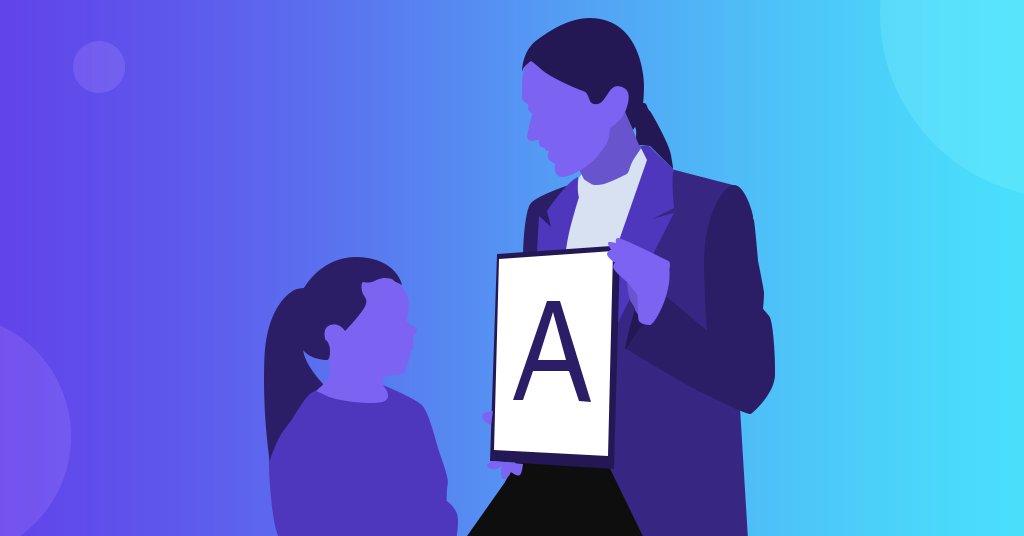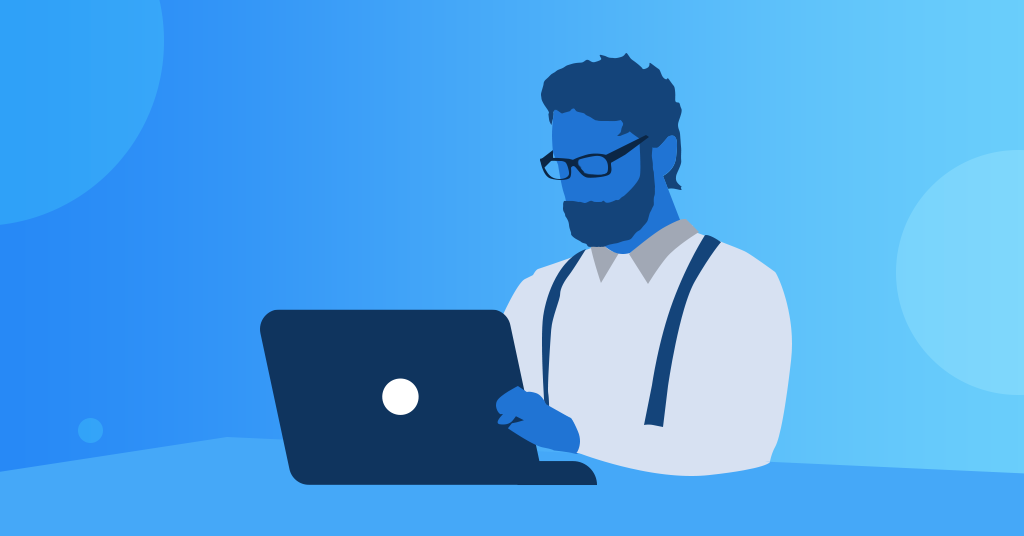In a profession that requires a diverse range of skills, the average day for a healthcare professional can be filled with an overwhelming number of demands.
When you’re in the midst of these challenges, staying balanced and focused can seem like unattainable goals. But, a growing body of research suggests that it’s possible when you integrate the practice of mindfulness into your day. Promising more than a fleeting sense of peace, mindfulness has been found to enhance productivity and precision.
In this article, we’ll delve into the power of mindfulness in healthcare, its role in improving client care, and the subtle shift it can create in the healthcare landscape.
What Is Mindfulness & Why Is It Necessary in Healthcare?
Mindfulness is the practice of paying active and non-judgmental attention to the present moment. It’s about consciously immersing yourself – even momentarily – in the now, rather than being lost in thoughts of the past or anxiety about the future.
At its core…
Mindfulness is about being present in whatever you’re doing, whether eating, walking, working, or even trying to sleep.
Mindfulness counterbalances both the trap of time and underpins the power of the moment, providing a healthy alternative to the ‘relaxing’ distractions, like social media, that we tend to use as a default.
The Trap of Time
It’s easy to fall into the trap of reliving regrets, past mistakes, or nostalgia. This can sometimes lead to feelings of sadness or depression. On the other hand, when we project into the future, it’s easy to become trapped in anticipatory anxiety, worrying over what’s yet to come.
These journeys away from the present moment can be draining and counterproductive.
The Power of the Present
The only moment we have direct control over is the present. Yet, it’s the moment we most often overlook. While we can learn from the past and plan for the future, living in the present is the key to a grounded and balanced life.
In essence, mindfulness is the active practice of this principle.
The Paradox of ‘Relaxation’
Our contemporary lifestyles don’t necessarily support mindfulness. We’re constantly bombarded by stimuli, from notifications buzzing on our phones to a relentless stream of information online.
Ironically, even in our attempts to unwind, we often dive deeper into these distractions, spending our free moments scrolling through social media feeds or catching up on emails. This consistent engagement means we’re often absent from the real world, missing out on the beauty and nuances of the current moment.
The Link Between Mindfulness & Cognitive Function
The brain, magnificent as it is, has its limits. It thrives when focused but can stumble when overloaded.
And unfortunately, overloading can easily happen when you work in an allied health practice.
Burnout is an ever-present threat for healthcare practitioners, interfering with the ability to think clearly, remember client details, and make quick, informed decisions.
Mindfulness can play a significant role in enhancing these cognitive functions, and conversely, a lack of it can impair them.
The Perils of Multitasking
Many of us pride ourselves on our multitasking abilities, believing that handling multiple tasks simultaneously makes us more efficient.
However,
Research suggests otherwise. Multitasking often leads to decreased efficiency, increased mistakes, and a higher likelihood of burnout. It’s not just about doing many things poorly instead of one thing well; it’s about the mental and emotional toll it takes on us over time.
Understanding “Switch Cost”
Whenever we shift our attention from one task to another, our brain pays a “switch cost.” This isn’t a metaphorical price; it’s a genuine cognitive load.
Although our brains are incredibly adaptable, managing multiple tasks at once (often under stress) isn’t a natural or comfortable state. It may be needed at times, but it shouldn’t be a constant state of being.
According to research by Meyer, Evans and Rubinstein, “problems arise only when switching costs conflict with environmental demands for productivity and safety”.
And the environmental demands for productivity and safety in healthcare are tremendous.
The Client-Practitioner Connection
Imagine being a client, sharing your symptoms or concerns, only to notice the healthcare professional’s gaze drifting or their attention divided. It’s unsettling.
A lack of mindfulness in healthcare can lead to miscommunication, missing crucial details, and even medical errors. Moreover, when practitioners aren’t present, they unknowingly send a message to their clients that they aren’t a priority. This can erode trust and hinder the therapeutic relationship.
Enhanced Cognitive Clarity with Mindfulness
When cultivating mindfulness, we train our brain to focus on one thing at a time, to engage with it fully. This reduces cortisol levels, which allows for singular focus.
The results?
Enhanced memory, and stronger decision-making and problem-solving abilities. Over time, mindfulness in healthcare can reduce a practitioner’s cognitive fatigue and emotional exhaustion, leading to better client care.
In a field as intricate and human-centric as healthcare, being mentally present isn’t just a recommendation; it’s a necessity. Embracing mindfulness isn’t merely about personal well-being; it directly impacts the quality of care practitioners provide and their ability to forge meaningful connections with clients.
Increased Focus & Task Efficiency
You may think of mindfulness as relaxation; in reality, it’s about honing a razor-sharp focus. By cultivating mindfulness, healthcare practitioners can improve self-efficacy, foster a state of “deep work,” and tackle complex tasks without the usual distractions.
Become Resilient in the Face of Pressure
The healthcare environment is inherently stressful, from unexpected complications to emotionally-charged situations. Mindfulness equips practitioners with tools to navigate these pressures, allowing them to bounce back more swiftly from challenging situations.
Improve Emotional Regulation
Reactivity can be a significant challenge, especially when confronted with demanding clients or in a state of burnout.
Victor Frankl said, “Between stimulus and response there is a space. In that space is our power to choose our response. In our response lies our growth and our freedom.”
Mindfulness cultivates a space between stimulus and response, allowing practitioners to choose their reactions rather than acting on impulse.
Engage in Active Listening
By being fully present, healthcare practitioners can genuinely listen to clients. This ensures better care and also makes clients feel valued, fostering trust.
Use Non-Verbal Communication
A large part of human interaction is non-verbal. A mindful practitioner is more attuned to subtle cues, such as a client’s body language or tone, leading to a deeper understanding of the client’s needs.
Provide Effective Feedback
With a clear, focused mind, providing feedback – whether to clients about their health or to colleagues about work processes – becomes more precise and constructive.
Build Stronger Relationships
At its core, healthcare is about human connection. Mindfulness in healthcare enhances this connection, ensuring clients aren’t just numbers, but individuals deserving of genuine engagement.
How to Implement Mindfulness Practices
Incorporating mindfulness into our daily lives begins by understanding its core principles and finding practical ways to infuse them into our routines. Whether in a fast-paced healthcare setting or simply navigating the complexities of modern living, mindfulness can be your anchor, offering clarity and balance.
Core Components of Mindfulness
Broken down to the basics, mindfulness is simply the conscious practice of the following principles:
Observing
Actively notice what’s happening around you and within you. This includes acknowledging sensations, thoughts, and emotions without getting wrapped up in them.
Describing
Articulate your observations simply and honestly. This might mean identifying an emotion (“I’m feeling anxious”) rather than qualifying it (“I shouldn’t feel anxious”).
Participating Fully
Be completely engaged in the current activity, whether a conversation, a task or simply taking a walk.
Being Non-judgmental
Accept experiences, feelings, and thoughts without labelling them as good or bad. It’s about viewing things objectively.
Focusing on One Thing at a Time
Embrace the power of single-tasking, ensuring you give complete attention to whatever you do.
Make Mindfulness Part of Your Daily Routine
In our experience, the following are excellent habits to build into your daily routine to help you focus your attention on the present:
- Morning routine: Spend 2 minutes at the start of your day checking in with yourself. Ask, “What am I feeling right now?” and “What are my priorities today?”.
- At work: Introduce small pauses into your routine. Before you start a task or switch to another, take a deep breath and ground yourself.
- Email strategy: Instead of constant inbox checks, allocate specific intervals for this to reduce distraction and increase focus.
- Physical boundaries: Keep your phone out of immediate sight when not in use. This simple act can reduce the impulse to check it mindlessly.
- At home: Dedicate 2 minutes when you arrive home to transition from work mode. Reflect on your feelings and set an intention for the evening.
- Reduce distractions: Maybe it’s the TV, or perhaps multiple devices. Identify what diverts your attention and reduce its influence.
- Engage fully: When conversing with family or friends, be entirely present. Listen actively and engage wholeheartedly.
- Practice mindful breathing: Several times a day, take a moment to focus solely on your breathing. It’s a natural and highly effective way to ground yourself.
- Emotional awareness: If you find resistance to exercise, for example, delve deeper. Name and acknowledge any barriers and address them.
- Mindful eating: When it’s time to eat, just eat. Avoid multitasking. Enjoy each bite, appreciate the tastes and textures, and eat slowly.
- Use an App: Apps like Calm and Simple Habit may help to maintain a consistent routine.
- Upskill: If you’re new to this, approach it like any new skill. A great resource to start with is Mindfulness by Oxford professor Mark Williams.
And… practice, practice, practice!
Like any skill, mindfulness gets easier and more effective with consistent practice. Over time, these mindful moments will merge, leading to a more grounded, attentive and peaceful you.
Conclusion
As we’ve explored, mindfulness in healthcare is not just a personal wellness tool; it’s a catalyst for enhanced productivity. In the whirlwind of activities and decisions required in allied healthcare, a present, focused, and resilient mindset could be the difference between merely surviving and thriving.
Along with mindfulness, the role of technology in enhancing productivity is undeniable. By streamlining tasks, managing client records efficiently, and automating routine activities, practice management software is a tool that can help you free up mental space by reducing your administrative burden.
Ready to elevate your practice’s productivity? Start your free trial of Power Diary today – no credit card required!







